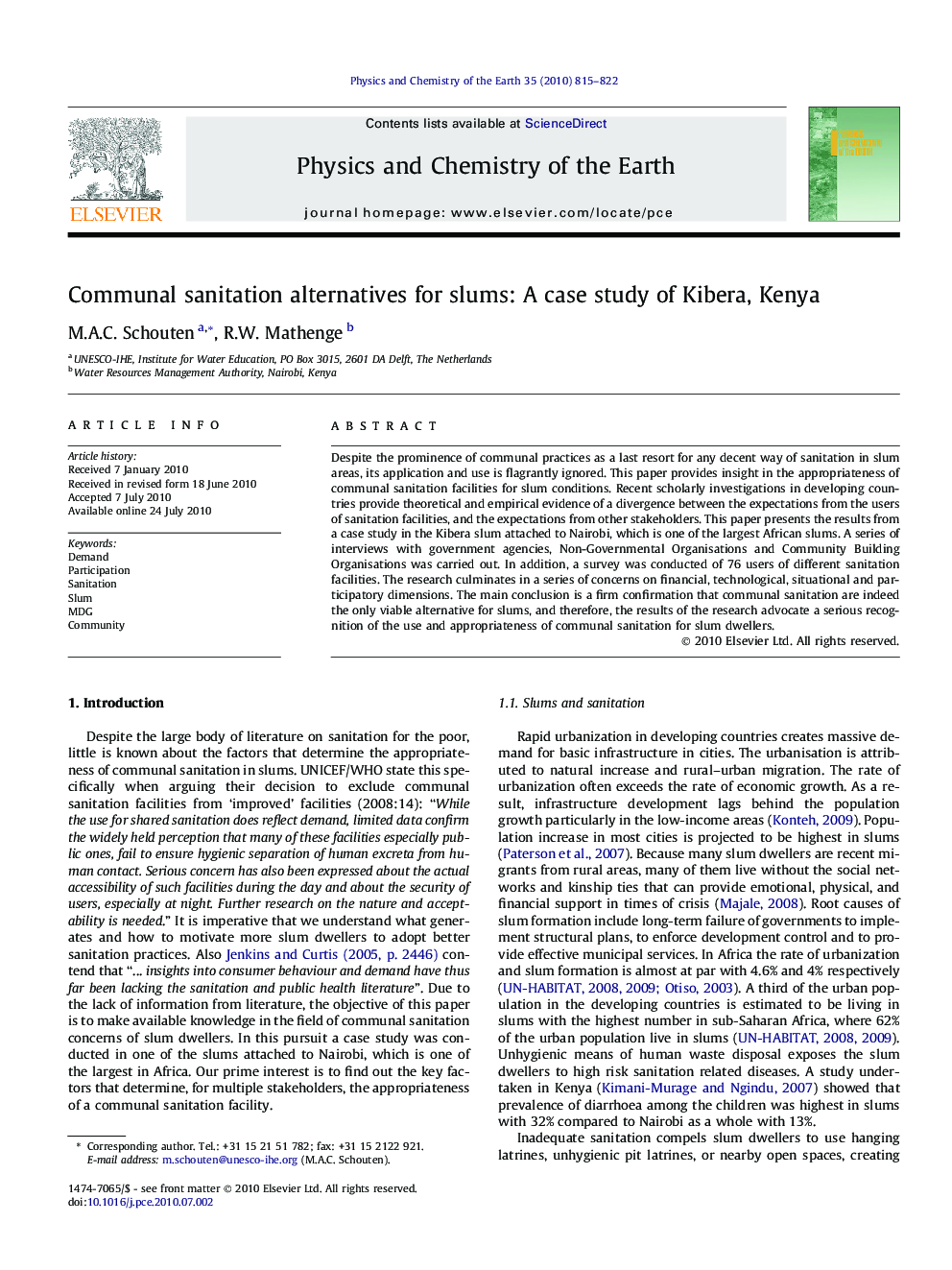| Article ID | Journal | Published Year | Pages | File Type |
|---|---|---|---|---|
| 4721788 | Physics and Chemistry of the Earth, Parts A/B/C | 2010 | 8 Pages |
Despite the prominence of communal practices as a last resort for any decent way of sanitation in slum areas, its application and use is flagrantly ignored. This paper provides insight in the appropriateness of communal sanitation facilities for slum conditions. Recent scholarly investigations in developing countries provide theoretical and empirical evidence of a divergence between the expectations from the users of sanitation facilities, and the expectations from other stakeholders. This paper presents the results from a case study in the Kibera slum attached to Nairobi, which is one of the largest African slums. A series of interviews with government agencies, Non-Governmental Organisations and Community Building Organisations was carried out. In addition, a survey was conducted of 76 users of different sanitation facilities. The research culminates in a series of concerns on financial, technological, situational and participatory dimensions. The main conclusion is a firm confirmation that communal sanitation are indeed the only viable alternative for slums, and therefore, the results of the research advocate a serious recognition of the use and appropriateness of communal sanitation for slum dwellers.
